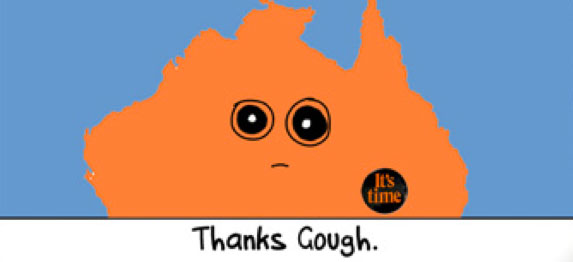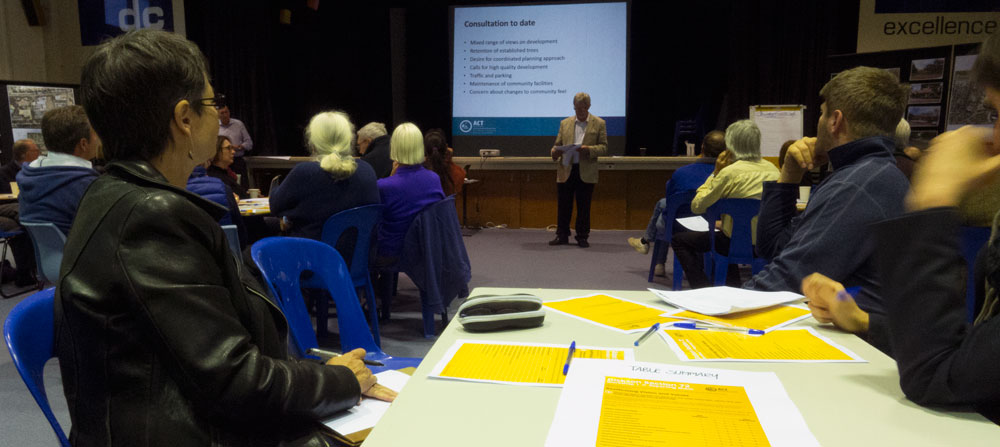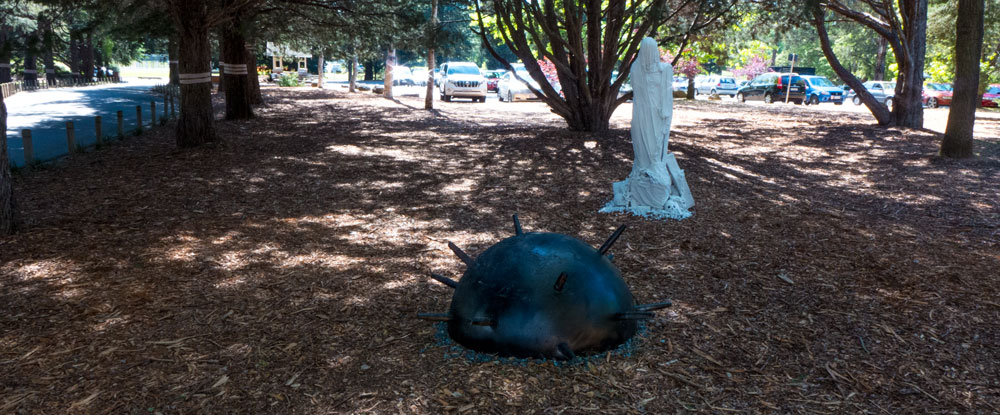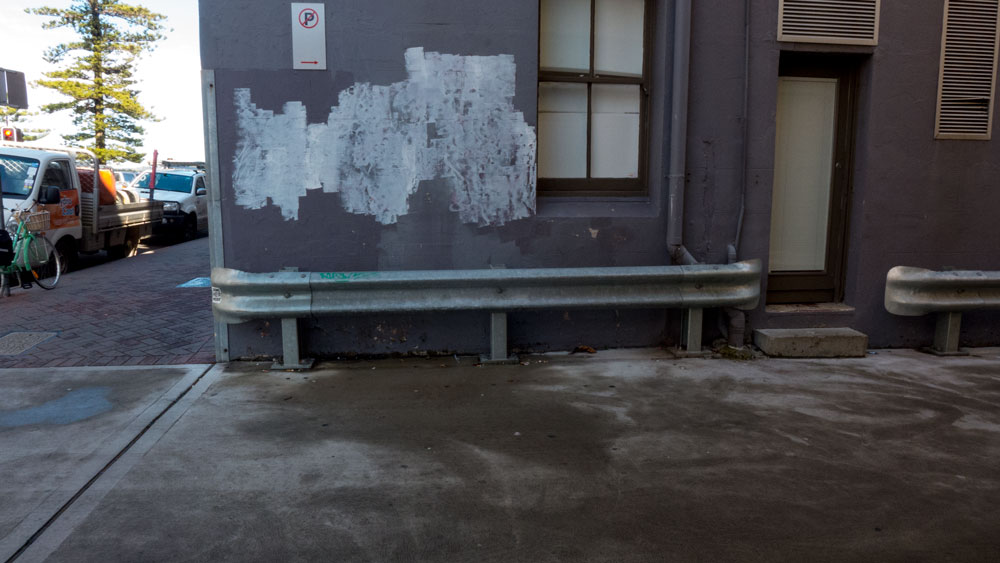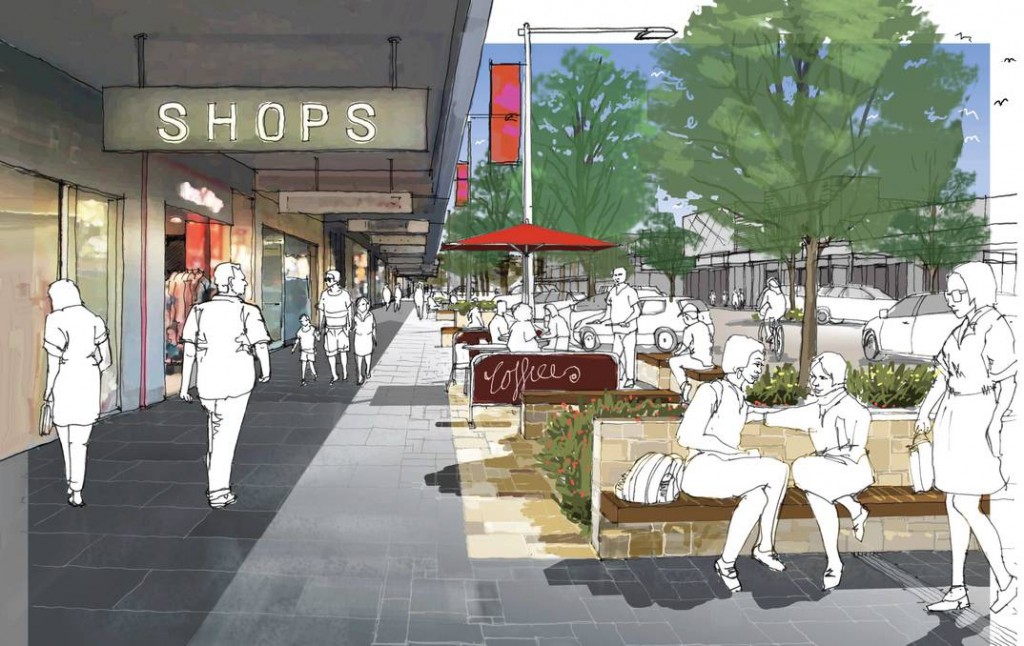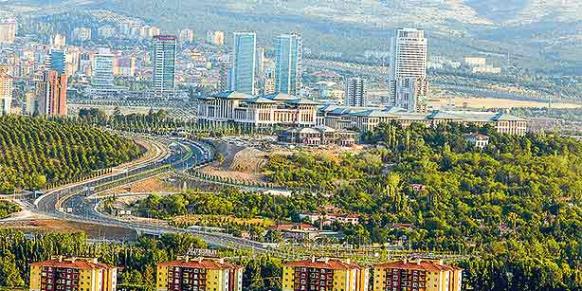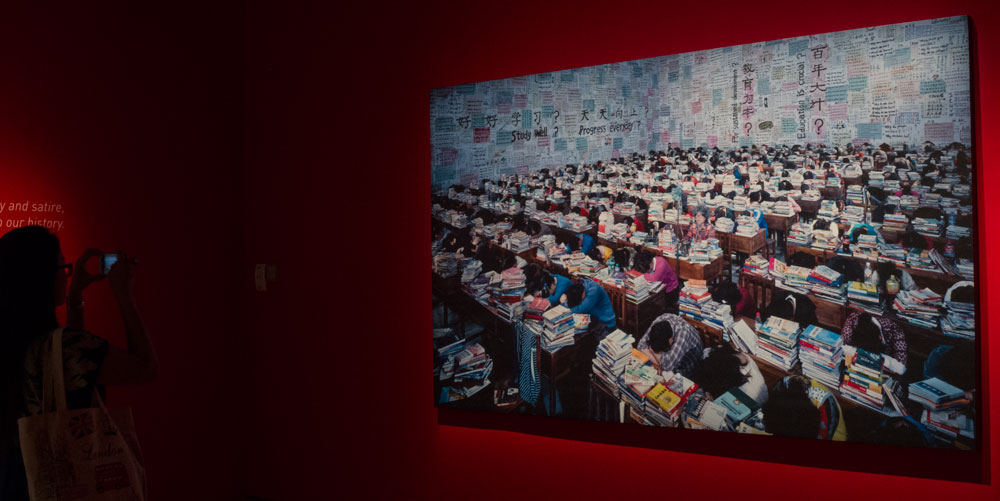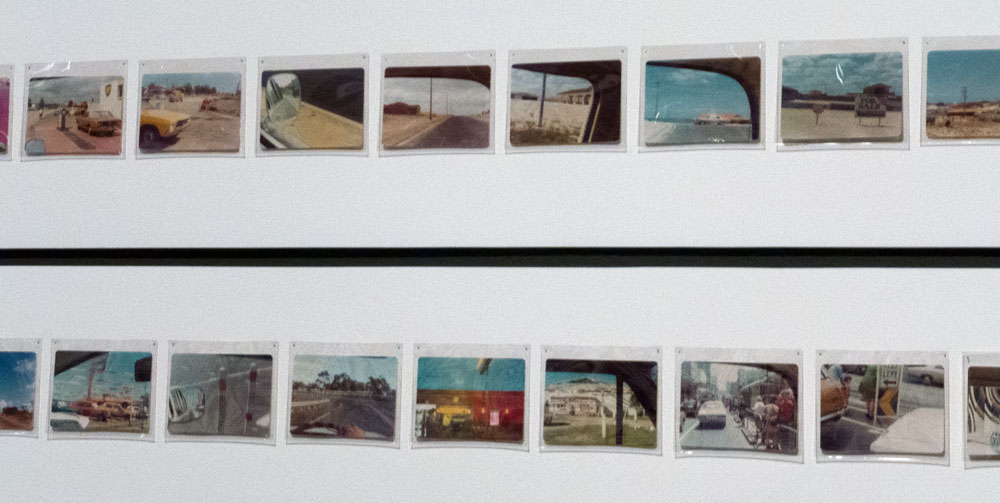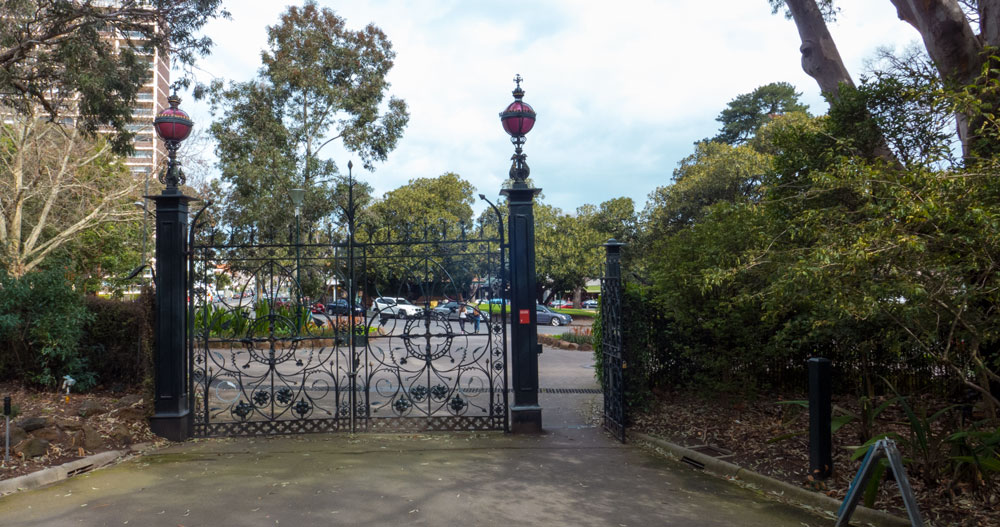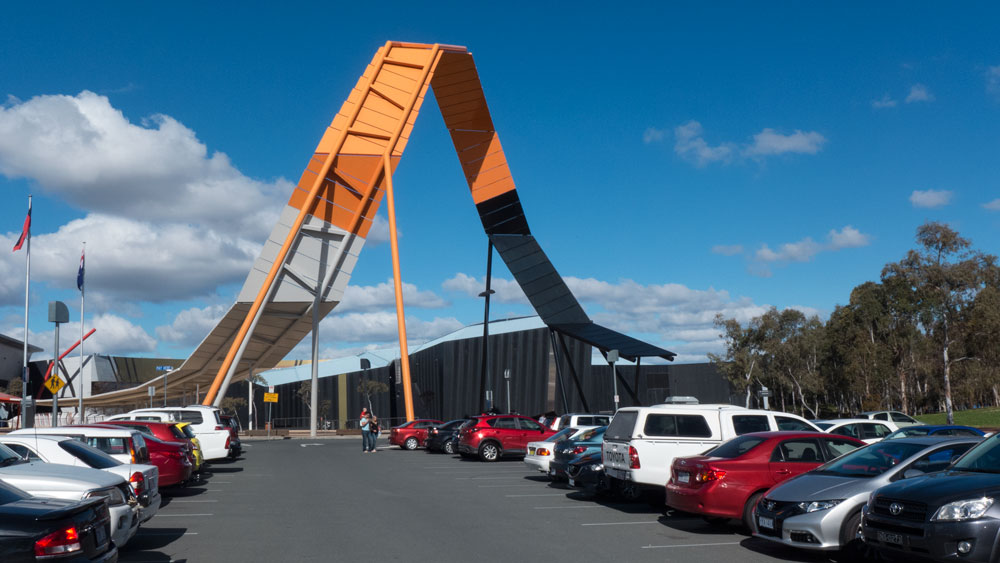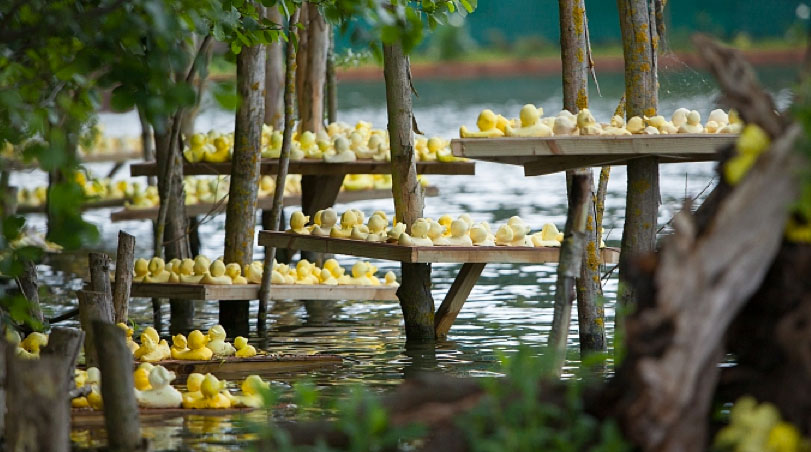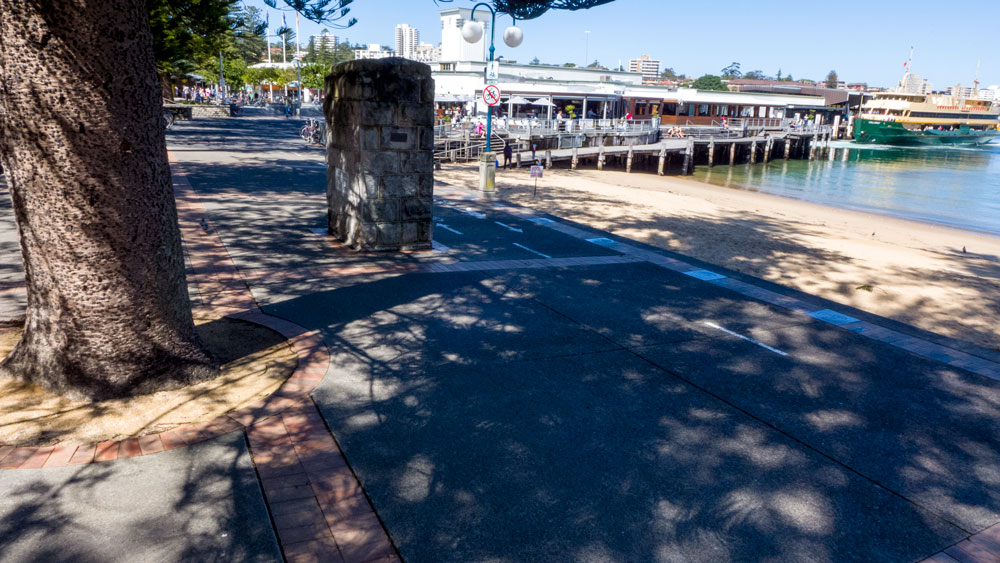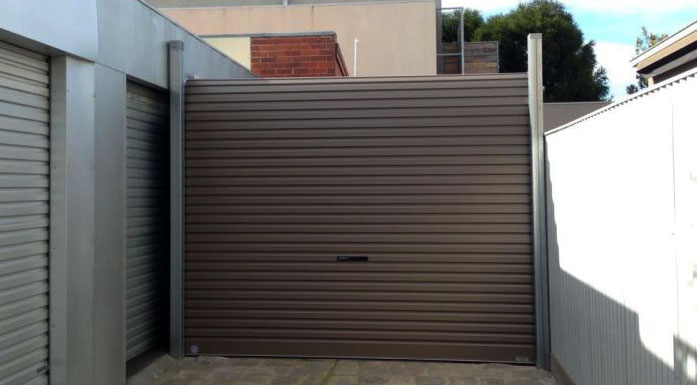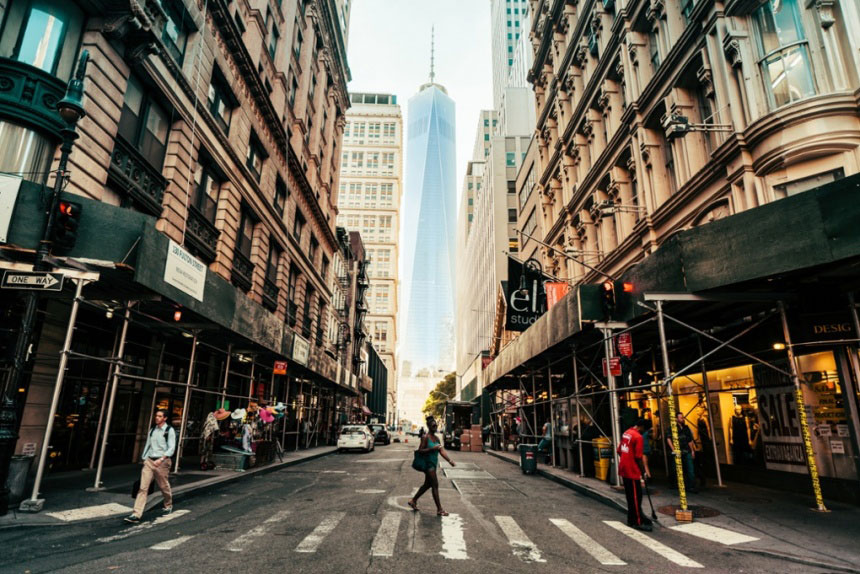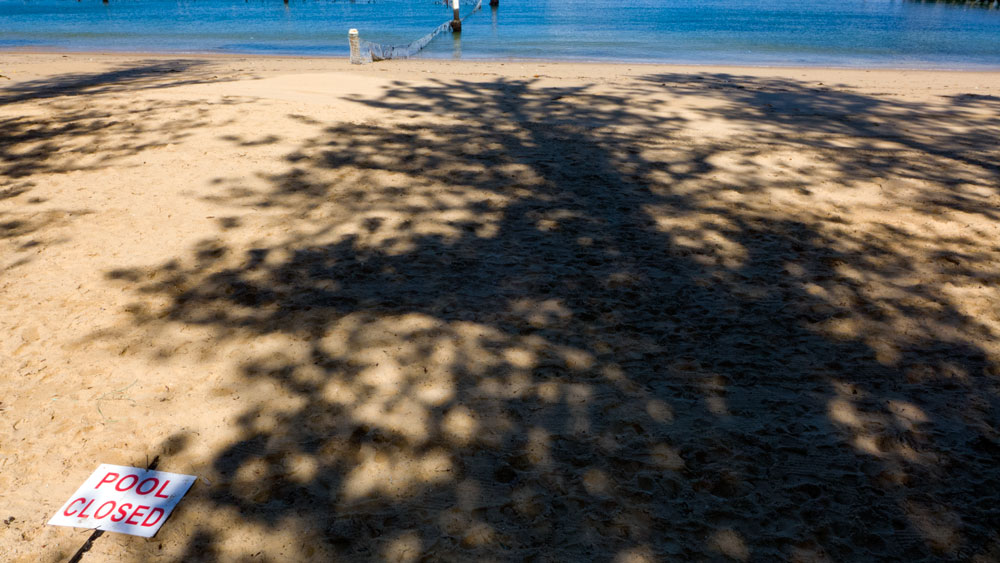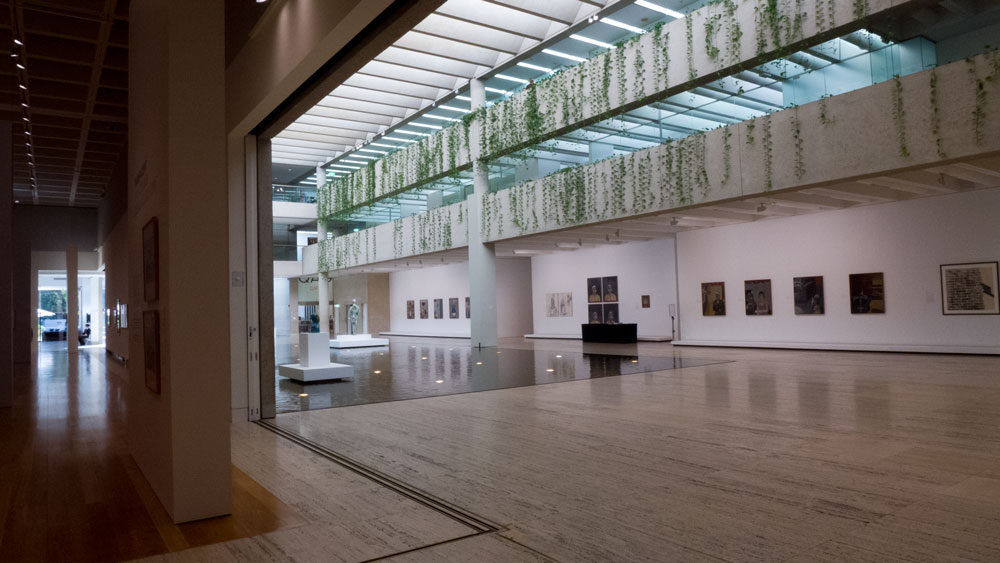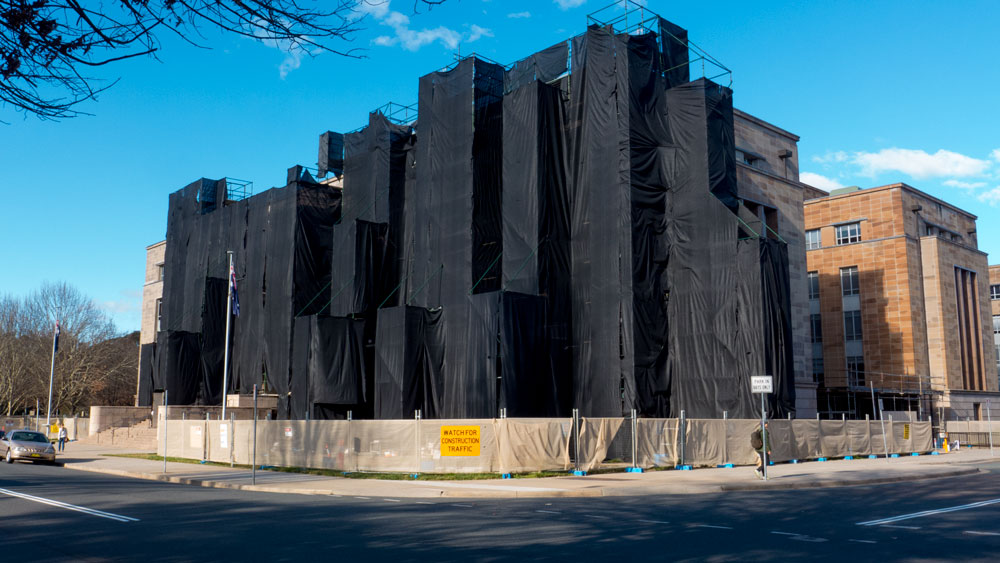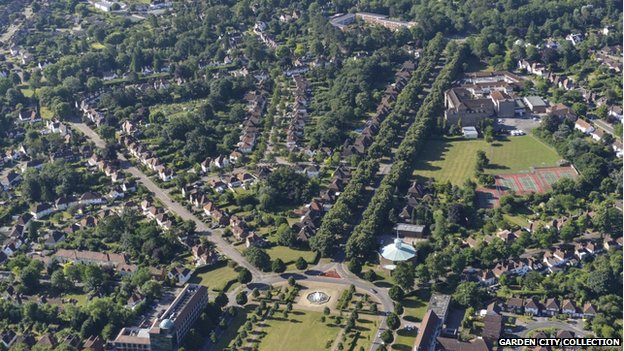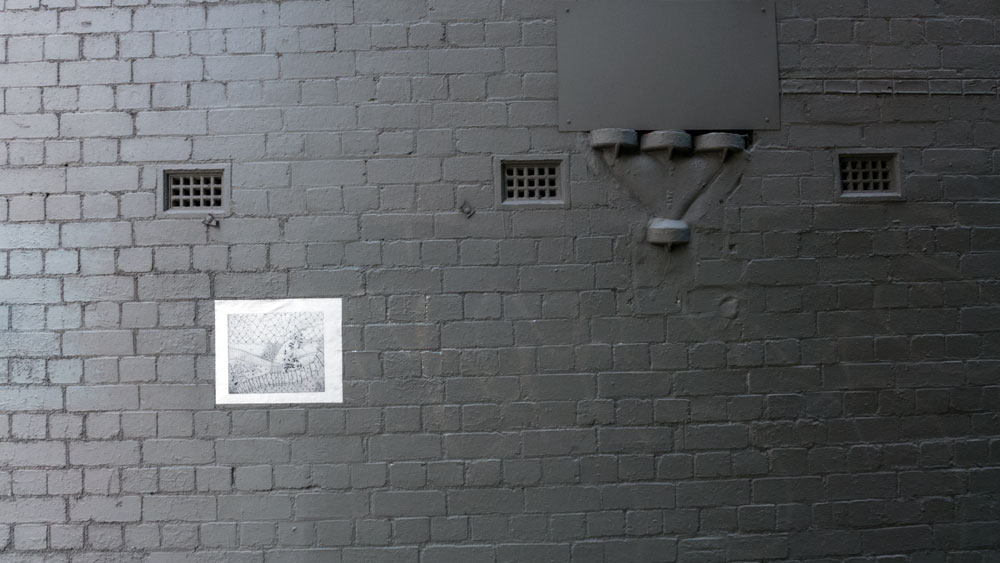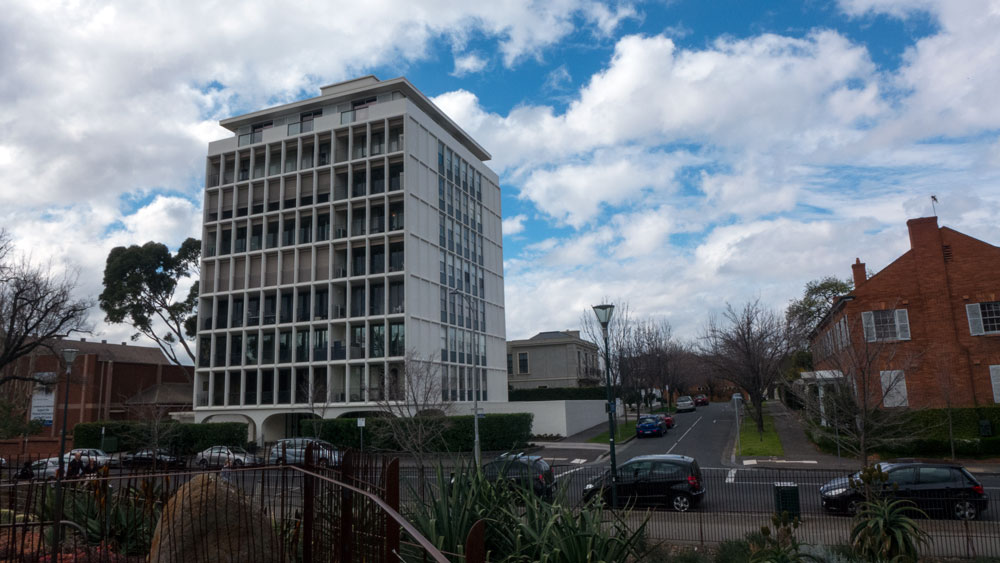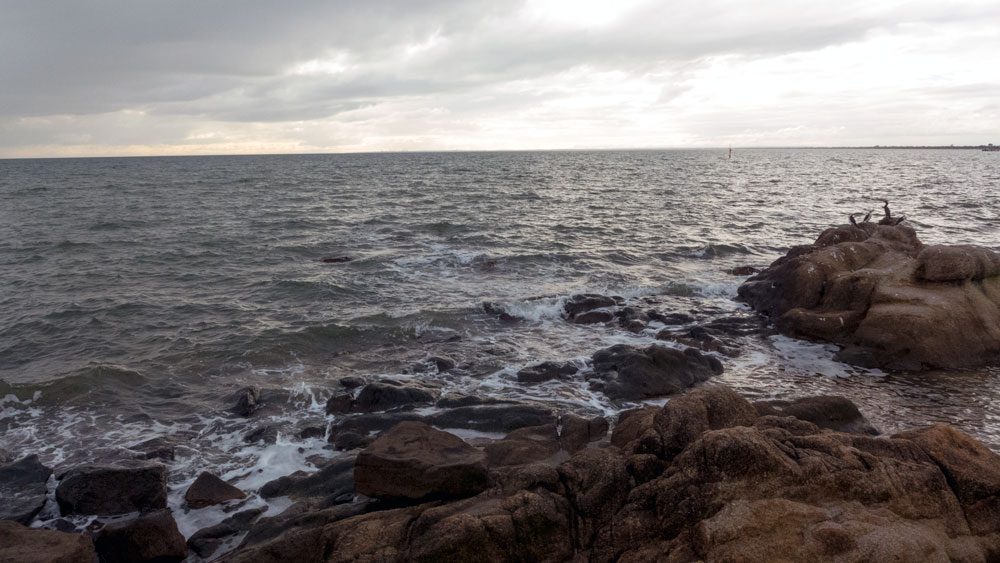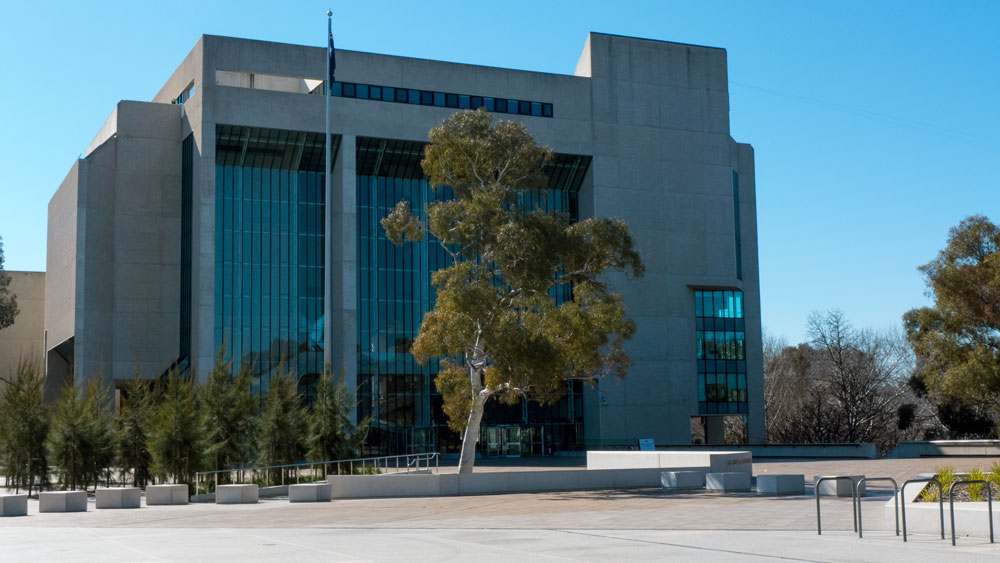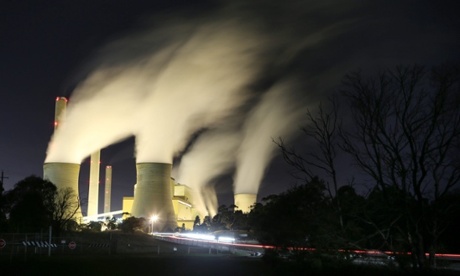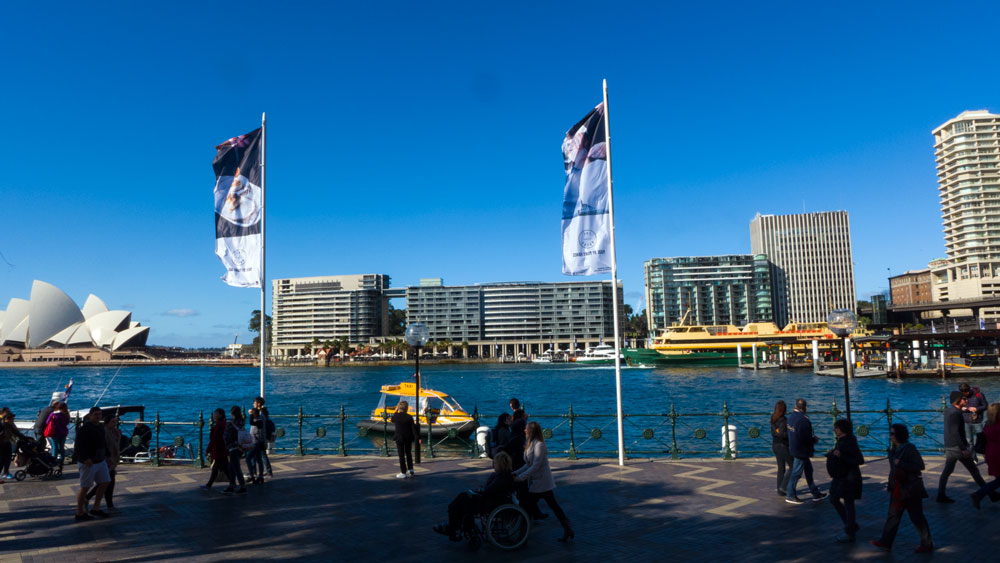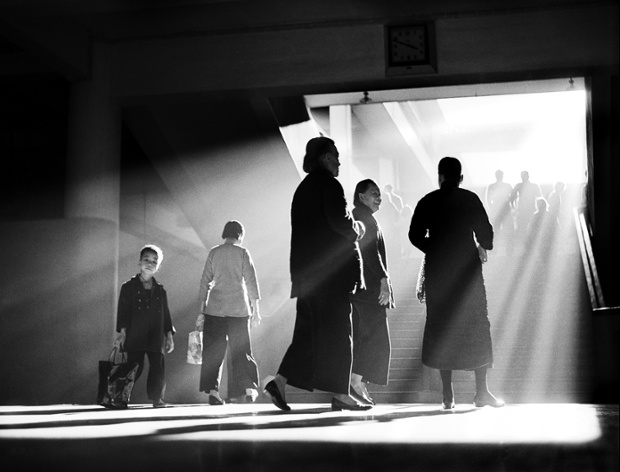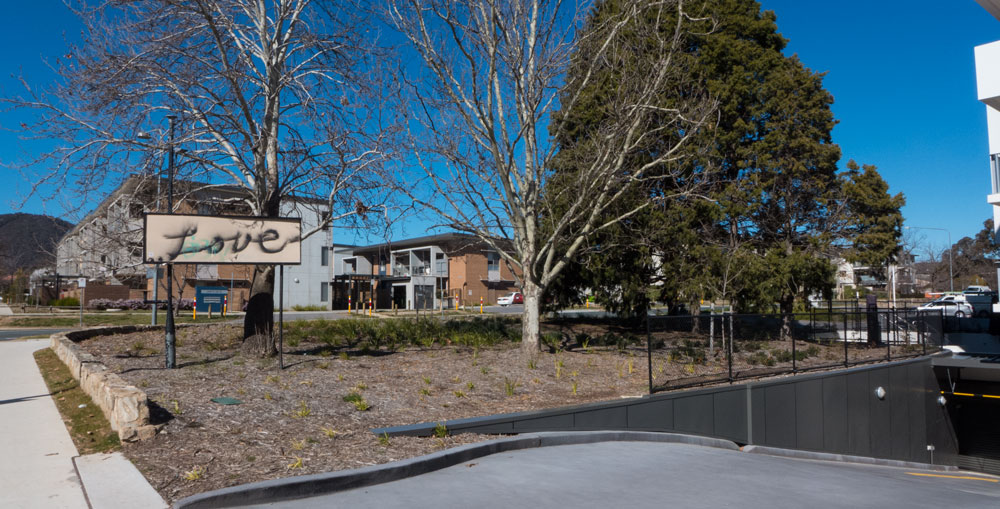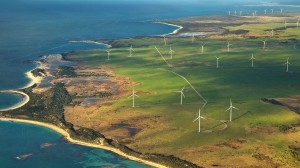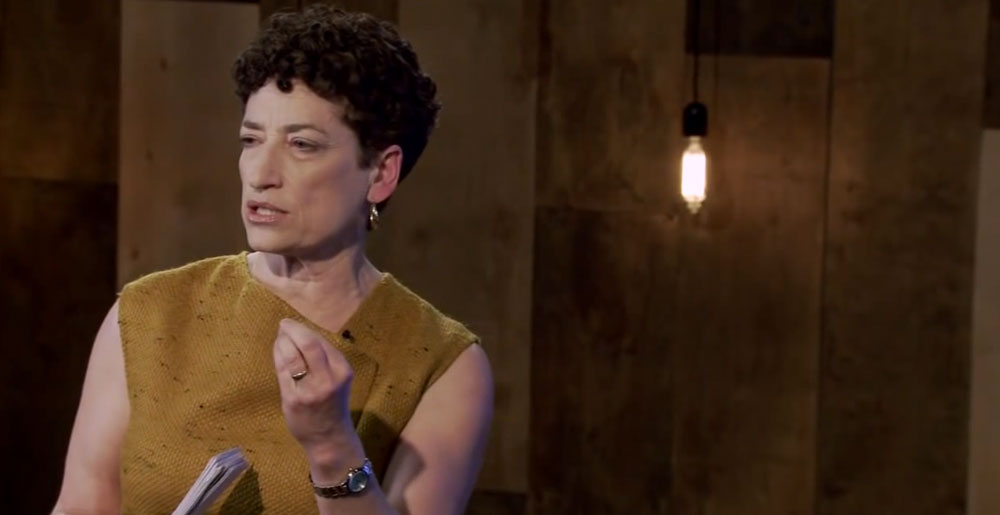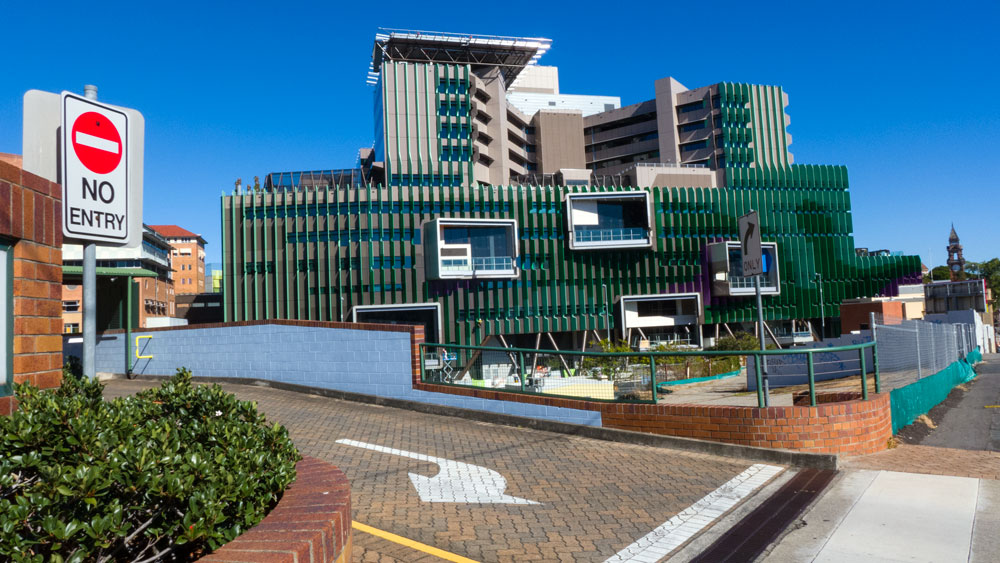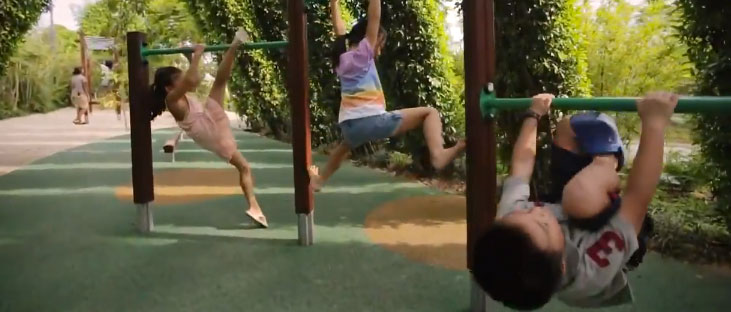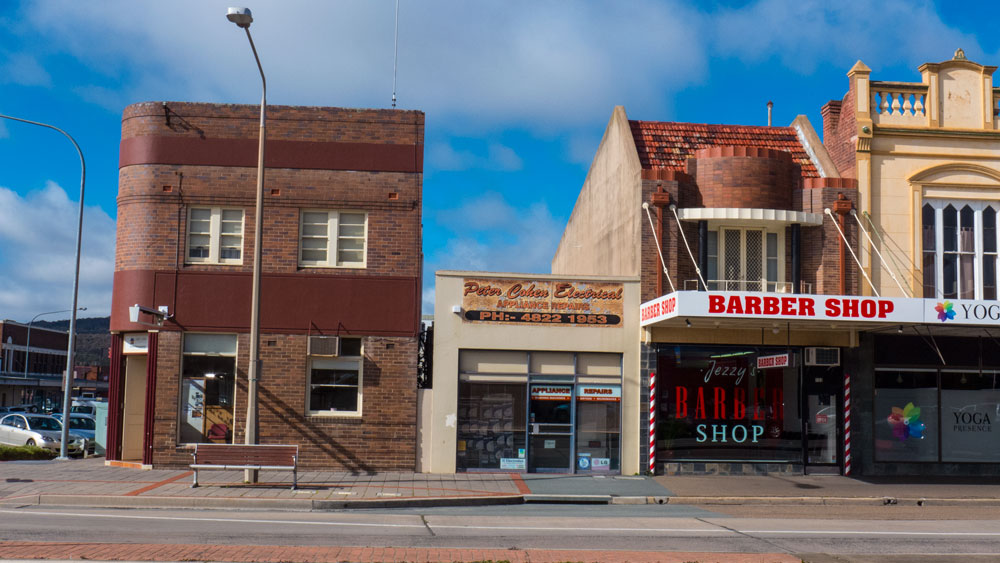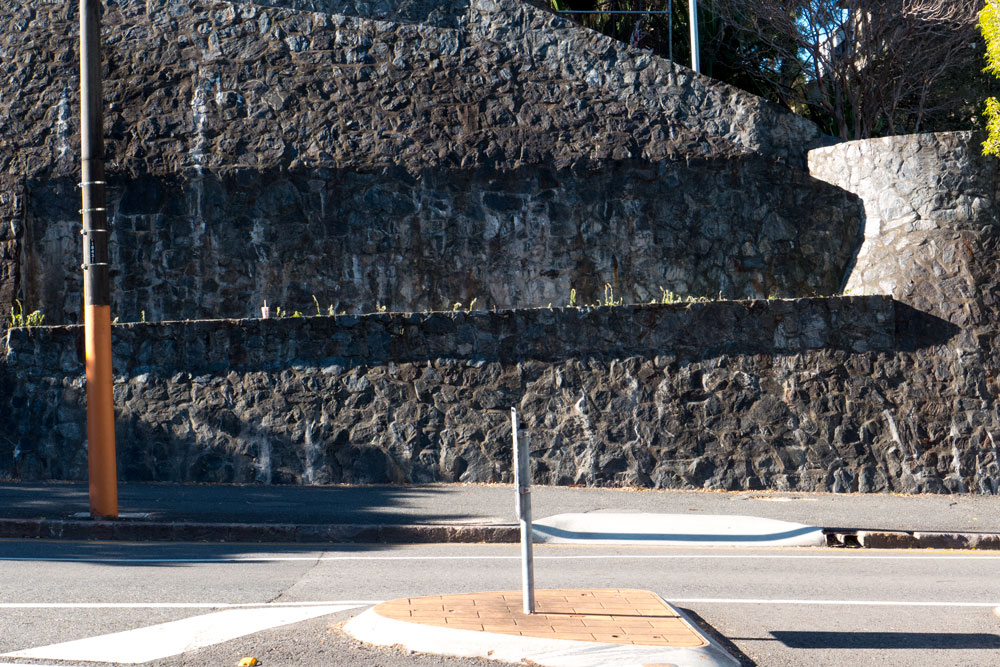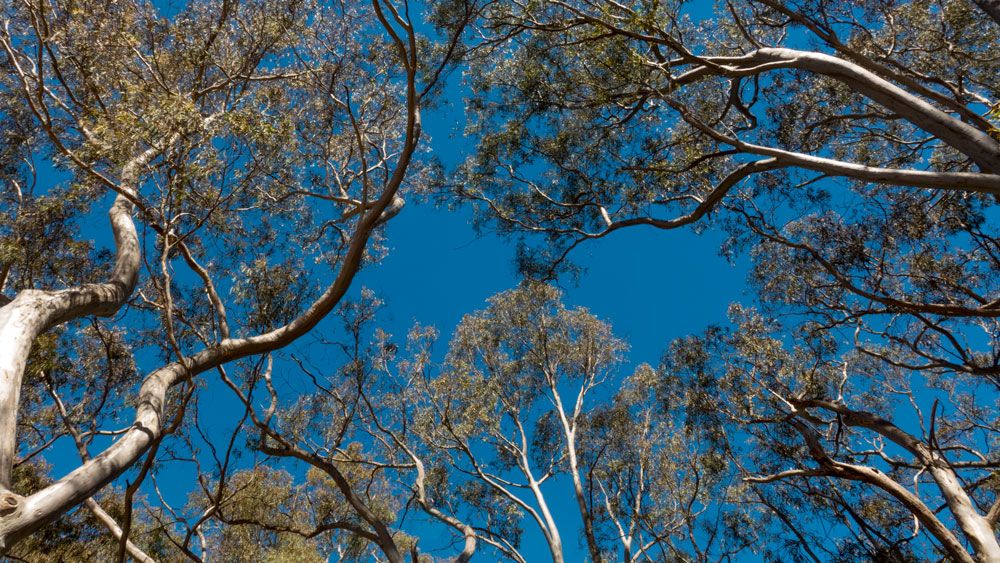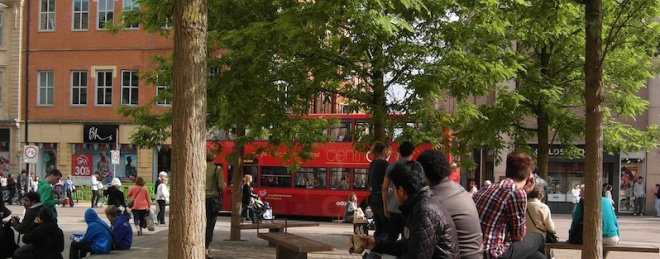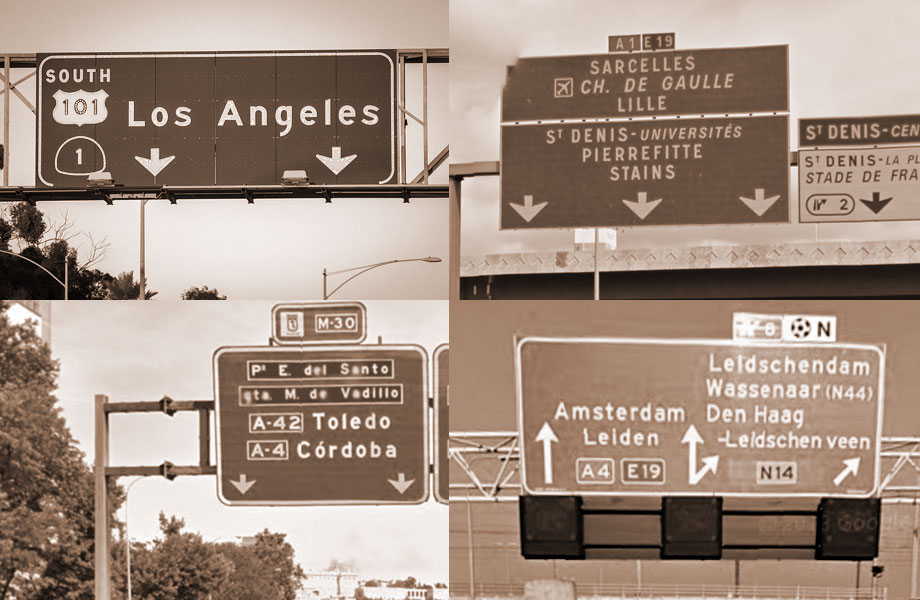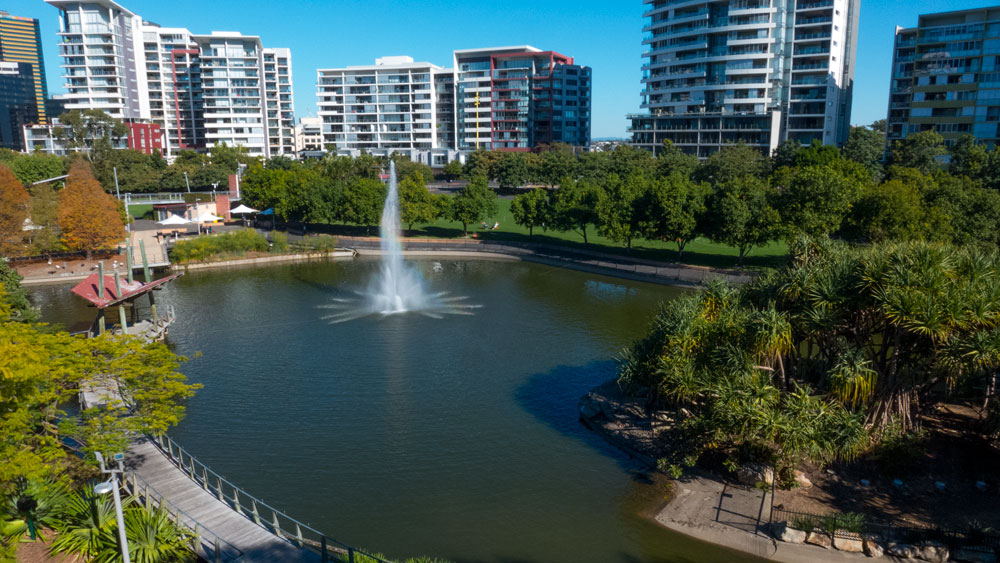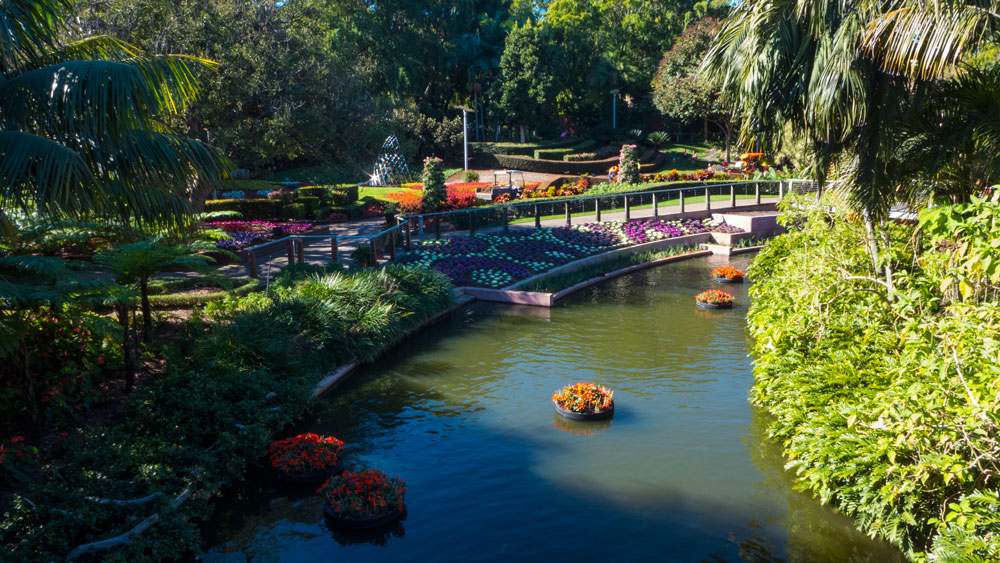 click on image for the Guardian story on how Bansky was accused of racism.
click on image for the Guardian story on how Bansky was accused of racism.
All posts by Paul Costigan
Gough Whitlam
section 72 Dickson
Canberra Sculpture
Review: Visual Arts
Sculpture Festival
at Canberra Grammar School Oct 2014
There’s been a couple of short-run sculpture festivals in recent years in Canberra. It is a great thing to see these events as they provide opportunities for our sculptors who otherwise have trouble getting into the usual exhibition venues.
My Story Julia Gillard
Announcement: New Book
Julia Gillard’s – My Story
 Happy to promote this book. This story remains complex. There have been several thoughtful reviews of the book published online. As well as the usual crap from the mainstream media, who were part of the problem during Julia Gillard’s time as Prime Minister. Sara Dowse has provided an intelligent and insightful review that is definitely worth reading. click here.
Happy to promote this book. This story remains complex. There have been several thoughtful reviews of the book published online. As well as the usual crap from the mainstream media, who were part of the problem during Julia Gillard’s time as Prime Minister. Sara Dowse has provided an intelligent and insightful review that is definitely worth reading. click here.
A Photograph
Photo-essay: Walking Manly in the evening
Not all walks around Manly (Sydney) involve wandering along the beaches. There are many streets and lanes to seek out to see how the urban environment settles into the evening.
Community Engagement
Comment: Cities Planning and the locals
Locally the planning authority is notorious for carry out all forms of planning with no real interest in the present residents and no interest in the urban character. It is left to the developers to define how the suburbs of Canberra will look in the future.
Turkey loses green space to developers
Comment: Turkey destroys its own back-yard
Turkey is losing precious green areas and open spaces as the number and scope of construction projects continue to expand.
Recent construction projects launched all over Turkey have fueled public concern as they destroy not only habitat but also cultural heritage. click here
Architecture discovers the bleeding obvious
Comment: Architects realise something is wrong with cities
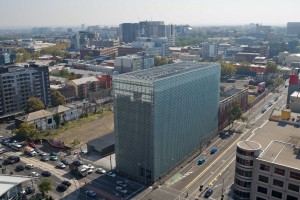 Just read a short article about how an architect at the world architecture festival stated that something has gone wrong with the design of our cities!
Just read a short article about how an architect at the world architecture festival stated that something has gone wrong with the design of our cities!
Wow! Now there’s a revelation from the profession largely responsible for the problem.
Continue reading Architecture discovers the bleeding obvious
Big Coal
Comment: there’s hope yet on how to hinder big coal.
 Many national governments, including Australia, persist in allowing Big Coal to influence its environmental and energy policies. However there is hope as a world-wide trend continues as corporations start to divest themselves of investments in the Big Coal companies.
Many national governments, including Australia, persist in allowing Big Coal to influence its environmental and energy policies. However there is hope as a world-wide trend continues as corporations start to divest themselves of investments in the Big Coal companies.
Singapore Photography
Arts Vandals
Climate Change
Comments: Climate Change in 2014
 There’s talk that Vladimir Putin must be invited to the G20 Summit as it is not up to Australia to limit the attendees. The positive is that other world leaders will have the opportunity to tell Putin what they think of his aggressions.
There’s talk that Vladimir Putin must be invited to the G20 Summit as it is not up to Australia to limit the attendees. The positive is that other world leaders will have the opportunity to tell Putin what they think of his aggressions.
Likewise, Tony Abbott, who is leading a dangerous government of climate change deniers, was not banned from attending the UN summits on terrorism and another on climate change.
Visual artist cleared of all charges
Comment: A case of the Police getting it wrong – again.
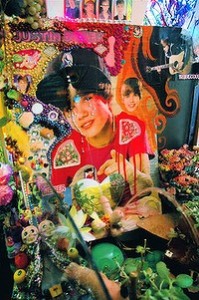 About a year ago, we visited Linden Gallery in St Kilda (Melbourne). This was not long after the infamous raid by police following a very dubious complaint about the ‘sexual’ content of an artwork by Paul Yore.
About a year ago, we visited Linden Gallery in St Kilda (Melbourne). This was not long after the infamous raid by police following a very dubious complaint about the ‘sexual’ content of an artwork by Paul Yore.
The director of the centre was holding up well given the nature of the issue she was having to deal with. She deserved to have been paid a lot more for all the complex stuff that had come her way.
Dirty Politics
Comments: on the sad state of politics
 Here in Australia we have suffered a series of dirty political events that have led to the election of one of the worst possible national governments. However it always an education to pop one’s head up over the wall to look to see how other countries are faring.
Here in Australia we have suffered a series of dirty political events that have led to the election of one of the worst possible national governments. However it always an education to pop one’s head up over the wall to look to see how other countries are faring.
Here are links to two bad cases mentioned in recent articles.
Journalism in Australia
Bicycles and Roads
Comment: The Dangers of Bicycles
 The ACT Government has released plans to trial the laws that make it mandatory for cars to keep at least one metre between themselves and cyclists. This is good news that this matter is being treated seriously as cycling on Canberra roads is very hazardous. But I say that with some serious issues to be aired as well.
The ACT Government has released plans to trial the laws that make it mandatory for cars to keep at least one metre between themselves and cyclists. This is good news that this matter is being treated seriously as cycling on Canberra roads is very hazardous. But I say that with some serious issues to be aired as well.
It must be remembered that as in the picture opposite, not everyone appreciates bike paths. There are dumb people everywhere!
Architecture Awards
Commentary: Architects and their awards
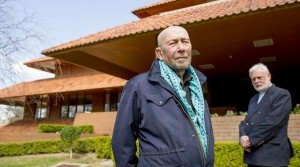 Architects and their awards have come to my attention for three reasons of late. The first was when Enrico Taglietti was featured in the local paper, The Canberra Times. According to the report one of his significant architectural achievements was being considered for a special award. Click here for the article.
Architects and their awards have come to my attention for three reasons of late. The first was when Enrico Taglietti was featured in the local paper, The Canberra Times. According to the report one of his significant architectural achievements was being considered for a special award. Click here for the article.
Big Corporations and Inequity
Comment: More on Corporations and Inequity
 I had reviewed Andrew Leigh’s very good 2013 book, Battlers & Billionaires – click here. Just this week there has been announcements from an American campaign that is raining voices about the control the corporate elite have on the country and how this is destroying the planet and our civil societies. click here
I had reviewed Andrew Leigh’s very good 2013 book, Battlers & Billionaires – click here. Just this week there has been announcements from an American campaign that is raining voices about the control the corporate elite have on the country and how this is destroying the planet and our civil societies. click here
Big Corporations
Big Tobacco & Michael Moore of Canberra
Commentary: Did Big Tobacco win this one
 I had previously posted a link to a good commentary by Michael Moore of Canberra. He said among other scathing things: “Tobacco companies want to prove that plain packaging does not work because it is being seriously considered by other governments across the world.”
I had previously posted a link to a good commentary by Michael Moore of Canberra. He said among other scathing things: “Tobacco companies want to prove that plain packaging does not work because it is being seriously considered by other governments across the world.”
Monash Gallery of Art, The Road
Review: Visual Art, photography
THE ROAD: Photographers on the move 1970–85
Monash Gallery of Art, 21 June–31 August 2014
Melbourne Botanic Gardens
National Museum of Australia Canberra
Hack Attack Nick Davies
2nd Notice: New Book
Hack Attack by Nick Davies
 Just to remind you that this book is worth reading. Sadly the ending is a bit depressing in that Nick considers the power elite have reshuffled a little but carry on a s before.
Just to remind you that this book is worth reading. Sadly the ending is a bit depressing in that Nick considers the power elite have reshuffled a little but carry on a s before.
It has also been interesting to read the story of Rebecca Brooks. The question has been posed elsewhere, was she just a user of the corporate and political systems in order to climb the ladder to join the ranks of those in power?
Art in Landscape
Monument in the Landscape
Photography: a plinth to honour almost nothing
This is a photograph of the monument on the harbour side of Manly to honour the landing of Captain Arthur Phillip in Manly. One problem!
Brickworks, Austral Bricks, Developers & political shenanigans
Commentary: emails and corporate shenanigans and lies
Brickworks – Austral Bricks – Developers and political shenanigans
 The Abbott funding scandal story gets more interesting day by day.
The Abbott funding scandal story gets more interesting day by day.
I am referring to the story generated by the release of the emails between Brickworks (owner of Austral Bricks among other subsidiaries) and the Chief of Staff for Tony Abbott. The point being made now is how this company assisted in the lies about and attacks on carbon pricing while they made profits from the government subsidies then available. click here
—————————————————–
Paul Costigan, 10 September 2014
When news gets weird
Urban Design New York
Commentary: Urban Design Fails at Ground Zero
There’s a very thorough article about the combined architectural and developer and government mishandling of the whole ground zero site in New York.
Undoing Public Education
Commentary: Damage being proposed for public education
 We all know that this government is doing everything it can to push through an ideological driven agenda for all aspects of Australian social life. With the blessing of the cluster of Vice Chancellors, the government wants to make the system favour those with money at the expense of those from socially disadvantaged backgrounds.
We all know that this government is doing everything it can to push through an ideological driven agenda for all aspects of Australian social life. With the blessing of the cluster of Vice Chancellors, the government wants to make the system favour those with money at the expense of those from socially disadvantaged backgrounds.
A Photograph
Photography: pollution in public places
In Manly (Sydney), the harbourside pool is closed after heavy rain because of pollution. One wonders where is the pollution coming from.
Melbourne Botanic Gardens Guilfoyle’s Volcano
Review: Landscape
Guilfoyle’s Volcano at Melbourne Botanic Gardens
This is a job well done. I saw an article about this and was determined to have a look. Now if only those promoting it had been sensible and given an address.
Continue reading Melbourne Botanic Gardens Guilfoyle’s Volcano
The Australia Council for the Arts
A Photograph
The Norway Alternative
Comment: Australia threw away the mining wealth.

In Australia the government has completely messed up any opportunity to gain long-term economic sustainability for the country. We have just witnessed the current government do a dirty deal with another party led by a mining millionaire to do away with an opportunity for a just tax on the miners.
Going Backwards Fast
Commentary: on how the country is being trashed
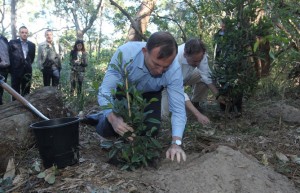 The Conversation has just completed an informative series on the range of devastating changes being made to this country.
The Conversation has just completed an informative series on the range of devastating changes being made to this country.
The writers cover most topics including: health, the environment, education, migration, science and the economy. It is definitely worth the time to make your way through them.
Urban Bikeway Design Guide
Notice: Urban Bikeway Design Guide, Second Edition
National Association of City Transportation Officials (NACTO)
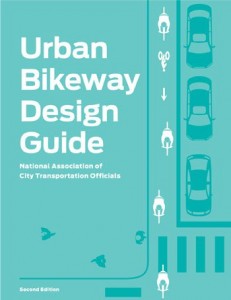 The Urban Bikeway Design Guide, Second Edition, is based on the experience of the best cycling cities in the world. Completely re-designed with an accessible, four-color layout, this second edition continues to build upon the fast-changing state of the practice at the local level. The designs in this book were developed by cities for cities, since unique urban streets require innovative solutions.
The Urban Bikeway Design Guide, Second Edition, is based on the experience of the best cycling cities in the world. Completely re-designed with an accessible, four-color layout, this second edition continues to build upon the fast-changing state of the practice at the local level. The designs in this book were developed by cities for cities, since unique urban streets require innovative solutions.
To create the Guide, the authors conducted an extensive worldwide literature search from design guidelines and real-life experience.
New Garden Cities
Competition winner: for new Garden Cities
It was announced in the UK that the winner of a competition has proposed that to deal with population growth that new cities should be built nearby established ones. These would be garden cities connected back to the older city by public transport.
Annette Messager at the MCA Sydney
Review (2nd): Visual Arts
Annette Messager: motion/emotion at the MCA Australia (Sydney) till 26 October 2014

We were fortunate to have a business reason to be in Sydney for the Monday, so allowed ample time on the weekend to get down to the Museum of Contemporary Art (MCA) on beautiful circular Quay to see this once in a lifetime exhibition of Annetta Messager’s artworks. It was definitely worth the trip. We loved it so much we went back the next day for a revisit.
NGA Senior Curator of Photography
Shaune Lakin, The New NGA Senior Curator of Photography
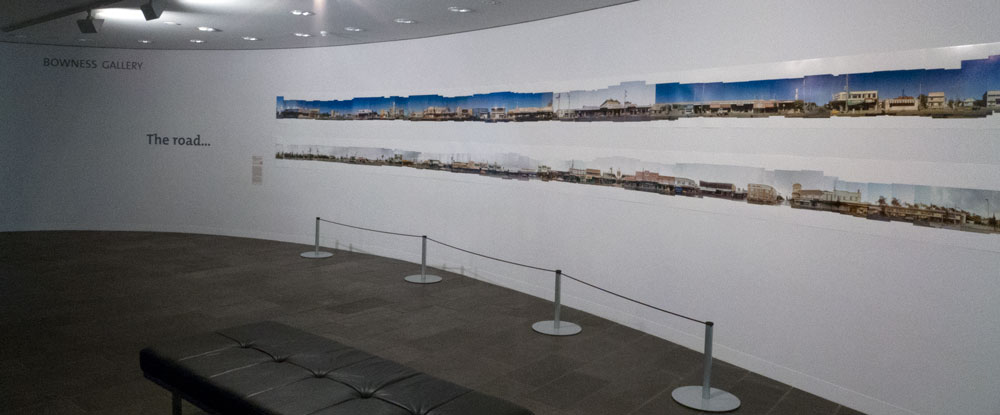 At the end of an exhibition seminar in August at the Monash Gallery of Art, we witnessed the NGA Senior Curator of Photography, Gael Newton (finishing September) , handing on the baton and all the challenges to her replacement, the new NGA Senior Curator of Photography (from October), Shaune Lakin (previously The MGA Director).
At the end of an exhibition seminar in August at the Monash Gallery of Art, we witnessed the NGA Senior Curator of Photography, Gael Newton (finishing September) , handing on the baton and all the challenges to her replacement, the new NGA Senior Curator of Photography (from October), Shaune Lakin (previously The MGA Director).
ACCA Melbourne
Review: Visual Arts
A visit to the Australian Centre of Contemporary Art (ACCA) Melbourne
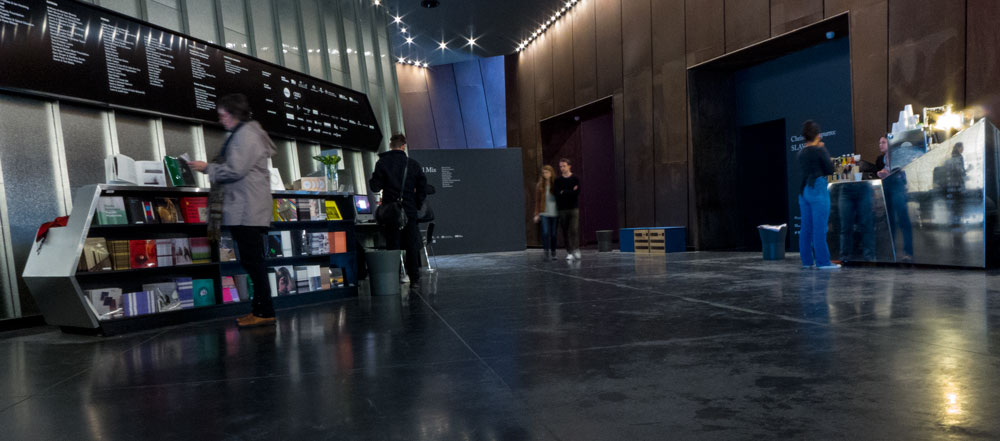
A Photograph
Guilfoyle’s Volcano
Review: Landscape
Guilfoyle’s Volcano at Melbourne Botanic Gardens
Andrew Laidlaw, landscape architect
This is a job well done. I saw an article about this and was determined to have a look. Now if only they had been sensible and given an address.
Architecture Melbourne Query
Singapore Photography
Natural Architecture
Comment: Landscape Art
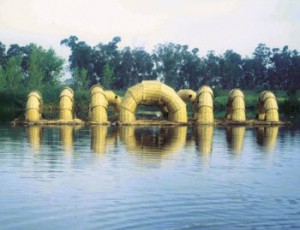 One of my many puzzles has been why within Australia, with all the diversity of natural landscapes, do we not see much landscape art.
One of my many puzzles has been why within Australia, with all the diversity of natural landscapes, do we not see much landscape art.
What I mean by that are artworks that actually are designed in the landscape or at least using natural materials to be in the landscape. There’s an article online about an architect who works with nature. click here.
——————————–
for more on architecture – click here
Paul Costigan, 20 August 2014
LA for bikes
Los Angeles a city for cyclists?
 LA wasn’t always a driver’s town. In the 1920s, it had the longest urban rail network in the world, and innovative infrastructure was built for cyclists as well. Despite this, Angelenos fell in love with the car early on and moved for more highway projects, making it the road-based city it is today.
LA wasn’t always a driver’s town. In the 1920s, it had the longest urban rail network in the world, and innovative infrastructure was built for cyclists as well. Despite this, Angelenos fell in love with the car early on and moved for more highway projects, making it the road-based city it is today.
——————————
Paul Costigan, 19 August 2014
The Monster Morrison and his freind
commentary: Good journalism
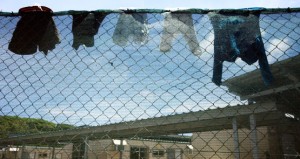
There are still journalists who tell it as it is really happening. A few.
I link here to two stories relating to two of Australia’s most evil men. There’s a few more!
One is a story of both of them by Jenna Price in the Canberra Times.
Melbourne
Commentary: Melbourne as liveable city?
Melbourne is a city I enjoy visiting. Most of the time my visits involve moving around the inner suburbs of Melbourne.
A photograph
Climate Deniers
Commentary: Big Coal, Climate Change and the Australian Government
It seems the news about the intelligence of the Australian government just continues to be depressing. Just how bad can they get? Is Tone Rabbott a complete destructive idiot!
A Photograph
Photographer Fan Ho
Photography: Fan Ho, Hong Kong photographer
Women taking on-going hits
Commentary: on the on-going inequities
 Croakey author, Michelle Hughes, highlighted the ongoing inequities within the health science arena – click here.
Croakey author, Michelle Hughes, highlighted the ongoing inequities within the health science arena – click here.
I identify with her final comment on the selection of keynote speakers as the issue of getting women as key-note speakers was a focus of mine in the past. I did come up with a strategy to deal with it. See my notes below.
Greener London
How making London greener could make Londoners happier
an interactive map
From The Guardian: London – with all its tarmac, brick and glass – is actually 38.4% open space and ranks as the world’s third greenest major city. Now Daniel Raven-Ellison wants to go further … and make Greater London a national park. His campaign and online petition aims to have the city treated in the same way as parks like the Peak District and the Brecon Beacons, to conserve its natural beauty, wildlife and cultural heritage.
——————————–
Paul Costigan, 20 August
NGA Visual Arts, Motherwell, Natori Shunsen, Contemporary Photography
Review: Visual Arts
Several exhibitions at the NGA
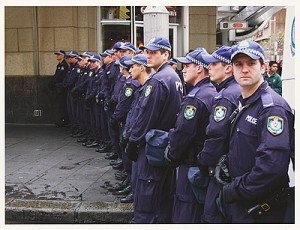 Our public galleries are places you should visit often, and not just for the big blockbuster exhibitions.
Our public galleries are places you should visit often, and not just for the big blockbuster exhibitions.
There are many other exhibitions, especially collection exhibitions, that are a wonder to see and enjoy.
Continue reading NGA Visual Arts, Motherwell, Natori Shunsen, Contemporary Photography
Urbanity: Canberra Planning & Development
Commentary: The problems of Canberra’s Planning & Development
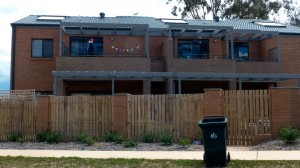 Canberra, as with most major centres in Australia, is caught up in complex and sometimes nasty urban planning debates.
Canberra, as with most major centres in Australia, is caught up in complex and sometimes nasty urban planning debates.
On the one side there is the property council groupings that include the gung-ho developers*, and their colleagues amongst the architects, planners and the planning authorities.
LA for Bikes
Los Angeles a city for cyclists?
LA wasn’t always a driver’s town. In the 1920s, it had the longest urban rail network in the world, and innovative infrastructure was built for cyclists as well. Despite this, Angelenos fell in love with the car early on and moved for more highway projects, making it the road-based city it is today.
——————————
Paul Costigan, 19 August 2014
John Witzig at National Portrait Gallery
Review: Visual Arts/photography
Exhibition: John Witzig at National Portrait Gallery, Canberra
till 19th October 2014, then touring.
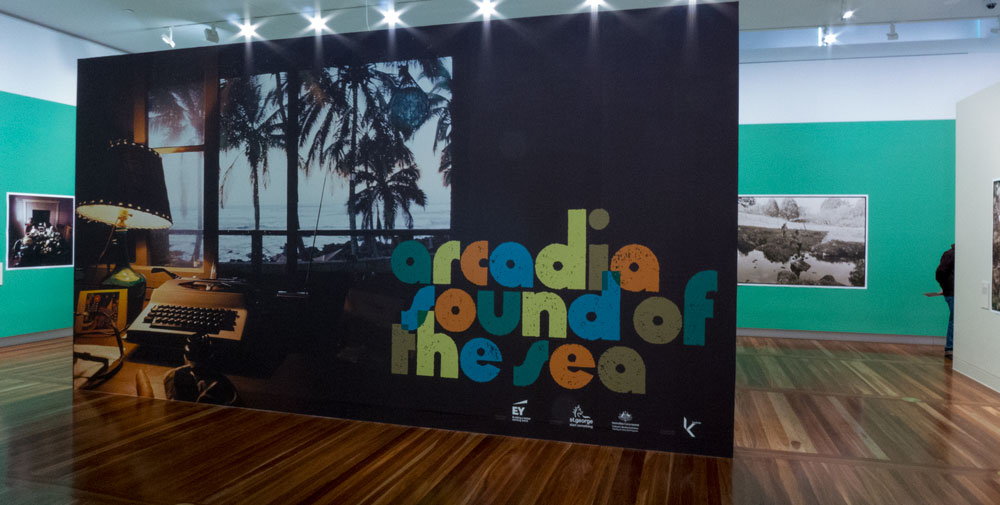 The National Portrait Gallery in Canberra has done itself proud with this special exhibition of photographs produced from the archive of the photographer John Witzig. Full marks to the historian curator, Sarah Engledow.
The National Portrait Gallery in Canberra has done itself proud with this special exhibition of photographs produced from the archive of the photographer John Witzig. Full marks to the historian curator, Sarah Engledow.
Embassy Architecture – Solomon Islands
Review: Embassy Architecture in Canberra
The Solomon Islands High Commission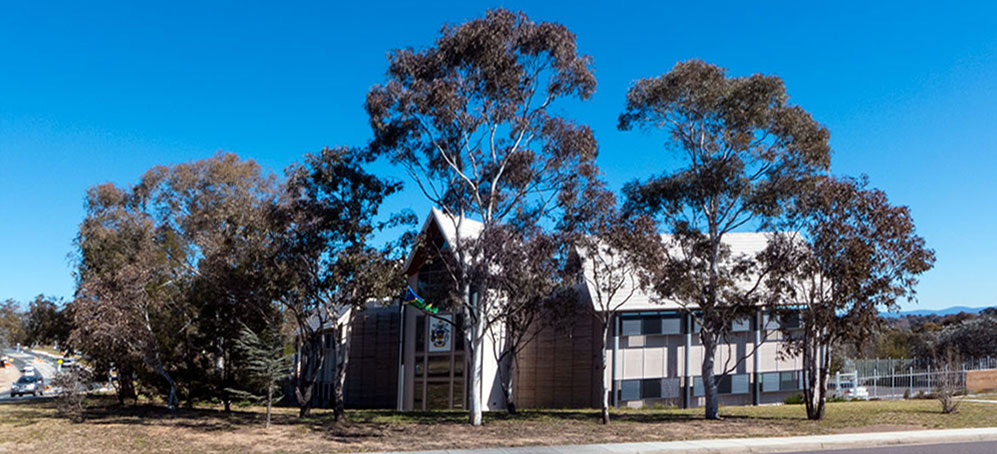 I spotted this example of successful embassy architecture as I was driving past to have lunch at the Beaver Gallery Cafe in Deakin. From the available online information (and there’s not much) I think these new buildings for the High Commission for the Solomon Islands were completed around 2011/2012.
I spotted this example of successful embassy architecture as I was driving past to have lunch at the Beaver Gallery Cafe in Deakin. From the available online information (and there’s not much) I think these new buildings for the High Commission for the Solomon Islands were completed around 2011/2012.
Architecture of Enjoyment
Announcement: New Book on Architecture
Toward an Architecture of Enjoyment, 2014, Author: Henri Lefebvre
 I’m about to get my hands on a copy of this book. Having read some of the commentary about the author and the concepts he is dealing with, the book reinforces the need for more discussion about the topic of enjoyment of architecture and urban spaces.
I’m about to get my hands on a copy of this book. Having read some of the commentary about the author and the concepts he is dealing with, the book reinforces the need for more discussion about the topic of enjoyment of architecture and urban spaces.
My life is already involved with dealing with planning bureaucracies that lack vision and any notion of good design. I have posted several times about the blandness of architecture in our cities.
Women take another hit
Commentary: on how the women of Australia have been hit (again) by so-called education reforms.
 One wonders just how long all thinking Australians are going to put up with so many terrible decisions being made by a federal cabinet that has just the one token woman present. Jane Caro has written a very good piece in the Guardian on how that stupid Education Minister is putting into place even more barriers to equity in employment. click here.
One wonders just how long all thinking Australians are going to put up with so many terrible decisions being made by a federal cabinet that has just the one token woman present. Jane Caro has written a very good piece in the Guardian on how that stupid Education Minister is putting into place even more barriers to equity in employment. click here.
—————————–
Paul Costigan, 11 August 2014
A photograph
Team Australia
Singapore Photography
Public Art North Korean Style
Comment: Public Art
There’s not much to add to this story online. Click on the image.
Nick Davies Hack Attack
Notice: New Book
Hack Attack by Nick Davies
I had read and reviewed Nick Davies former revelatory book, click here. Now Nick follows through with the more worrying story of the damage that has been done to the media following the phone hacking scandals.
Big Coal & The Reef
The Rabbott Government and Big Coal and The Reef
 The Guardian has published a terrifying article of just how far down this country is heading. As Tim Flannery says: The Great Barrier Reef is sick. Almost half of its coral is already dead and a massive new coal mine, which was given final approval this week, will only cause further damage. This is not just an issue for Australia, it affects us all.
The Guardian has published a terrifying article of just how far down this country is heading. As Tim Flannery says: The Great Barrier Reef is sick. Almost half of its coral is already dead and a massive new coal mine, which was given final approval this week, will only cause further damage. This is not just an issue for Australia, it affects us all.
—————————————
Paul Costigan, 3 August 2014
Annette Messager at the MCA
Review (forecasted): Visual Arts
 Annette Messager: motion/emotion at the MCA Australia (Sydney) till 26 October 2014
Annette Messager: motion/emotion at the MCA Australia (Sydney) till 26 October 2014
Here’s an exhibition that you must see. If you are in Sydney or thinking about going to Sydney, you must allow ample time to wander through and contemplate this exhibition by this extraordinary artist. We were there on Saturday, and it was busy. Today (Sunday) we returned to watch the film and to walk through again. If you have any interest in contemporary art, a visit to the MCA will be worth it! Then go back for a second visit.
There will be a review to follow. Click here. The catalogue is a wonderful production but I suspect it is about to be sold out (I have one).
———————————————-
Paul Costigan, 3 August 2014
The Barrier Reef & Big Coal
The Rabbott Government and Big Coal and The Reef
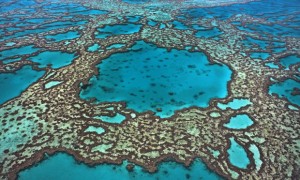 The Guardian has published a terrifying article of just how far down this country is heading. As Tim Flannery says: The Great Barrier Reef is sick. Almost half of its coral is already dead and a massive new coal mine, which was given final approval this week, will only cause further damage. This is not just an issue for Australia, it affects us all.
The Guardian has published a terrifying article of just how far down this country is heading. As Tim Flannery says: The Great Barrier Reef is sick. Almost half of its coral is already dead and a massive new coal mine, which was given final approval this week, will only cause further damage. This is not just an issue for Australia, it affects us all.
—————————————
Paul Costigan, 3 August 2014
Wind Power and Heritage
Comment: Wind Power aesthetics
Recently a colleague expressed doubts about how he viewed a new wind farm that appeared in a landscape that he and his son loved to escaped into when time allowed. While he is totally committed to alternative energy, the issue he was working through was that the wind farm challenged his aesthetics, or to be more accurate he was still having trouble accepting them in this landscape that had been part of his memory since childhood.
Visual Artist: Banksy
The Honour Code
Visual artist Jeff Wall
Review: Visual Arts

Review: The imagined tableaux has been a fascinating area of photography from the beginnings of the art form. Personally I place this form of photography as being one of the most enjoyable and engaging forms of photography. Therefore I would always recommend an exhibition by Jeff Wall , no matter how many times you have seen his work previously.
Climate and Health
Climate change challenges to health

The Academy of Science brought together young researchers and leading scientists to discuss climate change and its impacts on health.
Climate change and health Think Tank
Climate change challenges to health
The Academy of Science brought together young researchers and leading scientists to discuss climate change and its impacts on health.
should we trust scientists
Remember Pig Iron Bob
Something to remember: Pig Iron Bob
Bob Menzies, the hero of the Liberal Party. Some of us have other thoughts about this man who wanted to sell out his country.
Climate Dangers
Climate Change dangers that Australia is ignoring
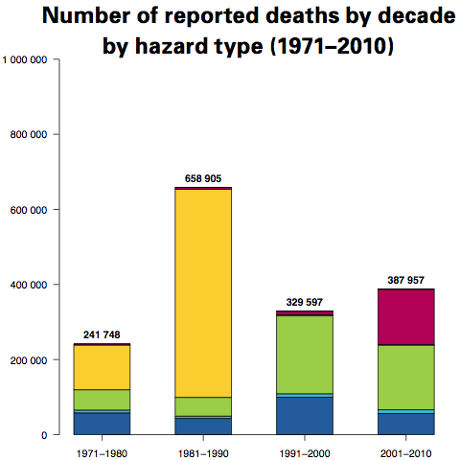 When you read the statistics on the range of dangerous changes already occurring to the planet because of climate changes, you do wonder about the stupid and dangerous decisions being made by the present Australian Government.
When you read the statistics on the range of dangerous changes already occurring to the planet because of climate changes, you do wonder about the stupid and dangerous decisions being made by the present Australian Government.
Suzanne Goldenberg has written that because of the changes to climate the world is nearly five times as dangerous and disaster prone as it was in the 1970s. Her reference is a new report from the World Meteorological Organisation.
Click here for that article.
————————————-
Paul Costigan, 26 July 2014
Chicago Millennium Park
Photo-Essay:
The park celebrated its tenth anniversary last June. This first image is from their own website.
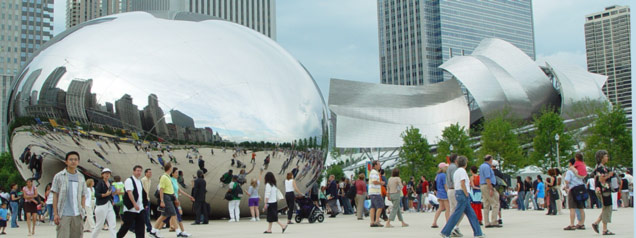
Hospital Architecture Brisbane
Review: Lady Cilento Children’s Hospital
photographed late June/early July 2014 – due to open later in 2014
On two recent visits to Brisbane I noticed this new hospital building under construction in South Brisbane. I first noticed it as while crossing the river. I was impressed that at last there was something in the area that was not simply bland-box architecture. (click on photographs to enlarge)
Supermarkets
The duopoly of supermarkets in Australia
 There is a very hard-hitting article in the August 2014 issue of The Monthly on how the two large supermarkets have been allowed to rip anyone and everyone off. Even more depressing is that it points to how we, as consumers, are continuing to allow this to happen.
There is a very hard-hitting article in the August 2014 issue of The Monthly on how the two large supermarkets have been allowed to rip anyone and everyone off. Even more depressing is that it points to how we, as consumers, are continuing to allow this to happen.
The major point raised by the article is how this dominance of the two of these supermarkets has reduced the food security in this country.
Trust Scientists?
Naomi Oreskes: Why we should trust scientists
 Many of the world’s biggest problems require asking questions of scientists — but why should we believe what they say? Historian of science Naomi Oreskes thinks deeply about our relationship to belief and draws out three problems with common attitudes toward scientific inquiry — and gives her own reasoning for why we ought to trust science. (From YouTube)
Many of the world’s biggest problems require asking questions of scientists — but why should we believe what they say? Historian of science Naomi Oreskes thinks deeply about our relationship to belief and draws out three problems with common attitudes toward scientific inquiry — and gives her own reasoning for why we ought to trust science. (From YouTube)
Naomi Oreskes is an American historian of science. She became Professor of the History of Science and Affiliated Professor of Earth and Planetary Sciences at Harvard University in 2013, after 15 years as Professor of History and Science Studies at the University of California San Diego. (Wikipedia)
Al Gore
Al Gore writes on optimism in dealing with Climate Change

In an article in Rolling Stone, Al Gore provides some very welcome optimism on how we may yet deal with the coming climate change events.
The article is very very long. It takes quite a commitment to allow the time to get through it all.
It is worth it! Happy reading. Click here.
——————————-
Paul Costigan, 20 July 2014
Al Gore: New Hope for Climate
Al Gore writes on optimism in dealing with Climate Change
 In an article in Rolling Stone, Al Gore provides some very welcome optimism on how we may yet deal with the coming climate change events.
In an article in Rolling Stone, Al Gore provides some very welcome optimism on how we may yet deal with the coming climate change events.
The article is very very long. It takes quite a commitment to allow the time to get through it all.
It is worth it! Happy reading. Click here.
——————————-
Paul Costigan, 20 July 2014
Far East Organization Children’s Garden, Singapore
Far East Organization Children’s Garden
at Gardens by the Bay in Singapore
I spotted this YouTube introduction to the Far East Organization Children’s Garden at Gardens by the Bay in Singapore.
Continue reading Far East Organization Children’s Garden, Singapore
National Capital Authority
The NCA is no longer relevant
 An opportunity has presented itself with the Commonwealth Government’s announcement to allow the National Capital Authority (NCA) to open up the Parliamentary Triangle to more commercial opportunities. (CT 12 July, Page 1, Shopping in the triangle? It’s a private matter)
An opportunity has presented itself with the Commonwealth Government’s announcement to allow the National Capital Authority (NCA) to open up the Parliamentary Triangle to more commercial opportunities. (CT 12 July, Page 1, Shopping in the triangle? It’s a private matter)
I have no problem at all with more commercial activity happening within the Parliamentary Triangle. The question is just how to intelligently implement such a change to this landscape that presently serves as a national monument.
Goulburn
A Photo-Essay
Here’s a small group of photographs from a recent visit to Goulburn on a very cold winter’s day. I managed to take a few moments from the business trip to snap a few photographs.
Click on any photograph to enlarge.
Brisbane, photo-essay
Brisbane, photo-essay
Here are a few photographs taken near the Roma Street Parklands in mid winter 2014. This time of the year makes for wonderful light. Please click on any of the images to enlarge them. I enjoyed this image because of the shadows and the light, the plants were being highlighted, and of course the texture and mass of the rock wall.
Trees
Comment on the Art of Trees
I have said it before and am happy to say so again, I live in a suburb in Canberra that has a fabulous amount of trees. The amount of trees in the public arena, streets and parks etc, combined with those throughout the residential properties delivers an ambience that is hard to explain to anyone who has not experienced it. With our local trees comes other biodiversity and heaps of bird life. Researchers have just worked this out. Click here for a story on this.
Trees and sustainable settlements
Comment on the Art of Trees
I have said it before and am happy to say so again, I live in a suburb in Canberra that has a fabulous amount of trees. The amount of trees in the public arena, streets and parks etc, combined with those throughout the residential properties delivers an ambience that is hard to explain to anyone who has not experienced it.
Landscape acoustic barrier
Landscape Art as acoustic barrier
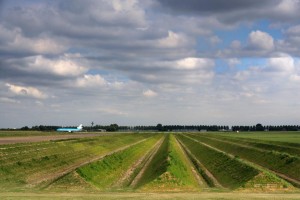 Amsterdam Airport Schiphol is located in one of the most densely populated areas of the country, and aircraft noise is a problem in the surrounding cities. Low-frequency ground noise created at take-off is especially difficult to combat because standard noise barriers are largely ineffective against it. Schiphol is implementing acoustical landscaping in the form of large ridges that dampen longer wavelengths.
Amsterdam Airport Schiphol is located in one of the most densely populated areas of the country, and aircraft noise is a problem in the surrounding cities. Low-frequency ground noise created at take-off is especially difficult to combat because standard noise barriers are largely ineffective against it. Schiphol is implementing acoustical landscaping in the form of large ridges that dampen longer wavelengths.
Urban Trees
Comment and Link to UK article on Urban Trees
I have the benefit of living in a suburb with plenty of tree cover. In fact the view outside onto the streets is almost as if the street is a parkland. The concept that any suburb should have an abundance of trees and shrubs and associated bio-diversity is simply so logical that one wonders why would anyone think otherwise.
Highway Arrows
Gender Inequity in Galleries
Confronting art world sexism
From an article by Jori Finkel in the Art Newspaper:
![]() In New York, Sperone Westwater comes in at 91 versus nine. Team Gallery at 85 versus 15; Matthew Marks at 84 versus 16, and Mary Boone at 83 versus 17. Some of the top galleries in Los Angeles tell a similar story: Blum & Poe is 89 versus 11; Prism is 88 versus 12; Thomas Solomon is 85 to 15, and Patrick Painter is 83 to 17.
In New York, Sperone Westwater comes in at 91 versus nine. Team Gallery at 85 versus 15; Matthew Marks at 84 versus 16, and Mary Boone at 83 versus 17. Some of the top galleries in Los Angeles tell a similar story: Blum & Poe is 89 versus 11; Prism is 88 versus 12; Thomas Solomon is 85 to 15, and Patrick Painter is 83 to 17.
Capability Brown
Roma Street Parkland, Brisbane, Part Two
Review: Roma Street Parkland, Brisbane
Part Two: The Urban Development Atrocities
The Queensland state government spent millions on the Roma Street Parklands. This parkland was set to add huge value to any apartments built around its edges. One would have thought that the City would have insisted on at least some higher levels of design for such buildings. Continue reading Roma Street Parkland, Brisbane, Part Two
Roma Street Parkland, Brisbane, Part One
Review: Roma Street Parkland, Brisbane
Part One: It is about creative Garden Design
I first visited these gardens and parklands back in 2004 and was very impressed then. This parkland project was a major commitment by the then state government to re-develop a former industrial site and to join it to the existing Albert Park to form one larger parkland, the Roma Street Parklands. I highly recommend anyone and everyone visiting Brisbane to allocate at least an hour to wander about these parklands ten minutes or more away from the Brisbane CBD. (click on any image to enlarge it)
Children’s Garden
Far East Organization Children’s Garden
at Gardens by the Bay in Singapore
I spotted this YouTube introduction to the Far East Organization Children’s Garden at Gardens by the Bay in Singapore.
Homeland
Review: TV on DVD
Homeland, Season Three 2014
I am not sure why, but I persisted to watch Homeland despite enough warnings in season two that the writers had lost the plot.
 I start these comments with my recommendation so I can avoid providing spoilers for those who have not watched the third season of this TV series.
I start these comments with my recommendation so I can avoid providing spoilers for those who have not watched the third season of this TV series.
